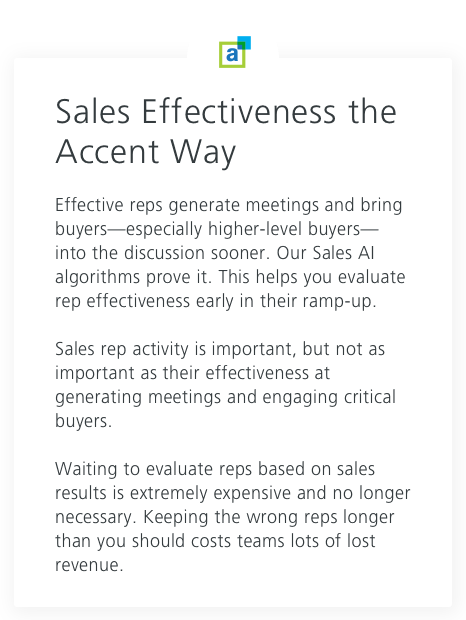uncategorised
Sales Force Effectiveness
If there’s one constant in modern day sales, it’s that things are constantly changing.
If your sales team is still doing things the way it did in the 1990s, then you are behind the curve and getting left in the dust by your competitors.
Technology in the sales space has been a game changer. It’s altering the way customers buy products, and by association, the way we sell them. Sales teams have access to more data than ever before – and our customers are more informed. The days of making a call, doing a presentation, and closing a sale are pretty much over.
 Today’s customers know more about their problems and how the solution you’re selling can help them. You can no longer get by with “features and benefits” salespeople. In today’s market you need visionaries who can see problems and pain points before your clients do.
Today’s customers know more about their problems and how the solution you’re selling can help them. You can no longer get by with “features and benefits” salespeople. In today’s market you need visionaries who can see problems and pain points before your clients do.
But how can we tell if our team is hitting the mark?
The good news is it’s easier than ever to measure sales force effectiveness. If you’re not tracking how good your sales team is at hitting quotas, closing deals, and doing so in a timely fashion, then odds are you’re not operating at peak capacity.
What is Sales Force Effectiveness?
If you got a room of sales managers together and asked them to define sales force effectiveness, you’d most likely get a wide variety of answers.
Some would focus on revenue generated. Others would talk about whether quotas were met. Some would talk about efficiency in terms of time needed to complete deals. The list goes on and on.
The truth is, they’re all right.
In the broadest sense of the term, sales force effectiveness measures how well your sales team is at completing their objectives. What those objectives are can vary from company to company. There’s no one right answer. The phrase sales force effectiveness can have different meanings suited for each individual.
At the end of the day, it’s about measuring how good your sales team is against a set of metrics and key performance indicators.
But for the purpose of this article, we can go with a much simpler definition:
Sales effectiveness is the average output per salesperson.
Like all things sales, the devil here is in the details. This definition offers us an easy overview of what sales effectiveness is. But as mentioned earlier, we can use a wide variety of key performance indicators to determine how truly effective our sales efforts are.
Measuring Sales Force Effectiveness
Without going too far down the rabbit hole, these are some of the most commonly measured metrics when it comes to sales force effectiveness:
- Effectiveness per sales region or territory
- Effectiveness per product line or product type
- Effectiveness against the average of all sale team members
- Effectiveness measured over different timespans
In the past, tracking this sort of data required a lot of paperwork and brainpower. But thanks to advances in modern technology, we now have software solutions that can track all of this and more. And with the push of a button.
Teams leveraging sale AI can take vast, complex sets of data and break them down in a multitude of ways. And it can help you see just how effective your sales force is. Sales force effectiveness measurements are just one of the many benefits this kind of software provides.
If you’re not utilizing data analytics and sales AI technology, then you may not be getting the most accurate picture of how your sales team is performing.
Trends in Sales Force Effectiveness
Like everything in sales, things are changing when it comes to sales force effectiveness. If you’re not adapting and keeping up with the changes, you’re falling behind your competition.
We talked a bit about how to measure sales force effectiveness earlier. Now let’s talk about some of the things sales managers and team leads have to contend with as sales moves forward in 2020 and beyond.
Sales Cycles Have Gotten Dramatically Shorter
Customers are now savvier than ever. Thanks to the wealth of information available online, many come into the sales pipeline farther along in the buyer’s journey than in years past.
Today’s potential customers do a lot of the early legwork on their own. They understand their problems. They’ve researched products that can provide potential solutions. They know the basics of pricing. In other words, by the time they involve your sales team, they’re already informed and well into the process.
As such, the things you’ll need to look for in a sales team have changed. The guy who can sell solutions and features and benefits isn’t as valuable as he was 10 years ago.
In today’s fast paced world, you’ll need salespeople who can serve as consultants as much as sales. Can your sales force take a meeting and help a potential customer find a problem they didn’t know they had? If so, you’re ready for the next generation of sales. If not, you may need to consider your hiring philosophy.
The trend of the shorter sales cycle doesn’t look to be ending any time soon. In fact, we’d guess the sales cycle will continue to decrease over the next few years. Especially as customers get even better at doing their own early product research.
The truly effective sales force will be agile and ready to guide deals to completion when these customers cross their path.
Want to figure out how effective your salespeople are with the shorter sales cycle? Advances in sales AI technology have made it possible to track each stage of your pipeline to figure out just how effective your individual team members are in the latter stages of the cycle.
Your Sales Force is Getting Younger
When considering those new hires to deal with a shortened sales cycle, it pays to think about who you’ll be hiring.
Millennials are now a large part of the job market and Gen Z is right behind them.
Unlike Boomers and Gen X, these potential employees look at work differently than their parents and grandparents. You’ll want to take that into consideration when determining sales force effectiveness metrics.
While many will talk derisively about millennials as the “participation award generation,” there is truth to the idea that they value recognition.
To make sure your younger sales forces is truly effective, consider going out of your way to recognize their efforts when they’re successful.
SEE ALSO: How to Motivate Your Employees to Sell More
Millennials often get a bad (and unfair) rap. But their love of technology and streamlining processes makes them invaluable team members in a world where shorter sales cycles are becoming more common.

Less is More with Metrics
With more and more data available to sales managers than at any other time in human history, there’s a tendency to overdo it with the analytics. But that can be a mistake.
Instead of focusing on more metrics, focus more on important metrics. This is an area where quality trumps quantity.
A good guideline here is to choose five metrics with large-scale impact on your bottom line and utilize those to judge your sales force effectiveness.
Does this mean you can’t ever use all those other fancy metrics your sales enablement software is showing you? No. What it does mean is simplifying your metrics can actually give you a better big picture view of how your sales department is operating.
Remember: more isn’t always better.
Final Thoughts
As you can see, there’s a lot that can be gleaned from measuring your sales force effectiveness numbers.
Beyond that, there are a lot of different ways to determine just how good a job your sales team is doing too.
At the end of the day, the key takeaway here is that you need to take the time to determine how effective your sales team is, figure out what sales success looks like, and determine the key metrics that will measure your success or failure.
Sales is constantly evolving. Whether you track effectiveness with Excel spreadsheets and a calculator or the latest sales AI software, it’s something you need to keep an eye on. It’s all but guaranteed your competitors are.
If you want to learn more about sales force effectiveness, sales pipelines, and best marketing practices, be sure to subscribe to our blog so you don’t miss our new posts!
Accent Technologies is the first and only SaaS company to bring together Sales AI and Content Management in a true Revenue Enablement Platform. We provide both sales and marketing with better visibility into the performance of their teams. This drives revenue through intelligent recommendations for complex sales scenarios and provides the data for rich analytics that power better coaching, forecasting, and long-term customer support. Learn more about our solutions or request a live demo to see it in action.











